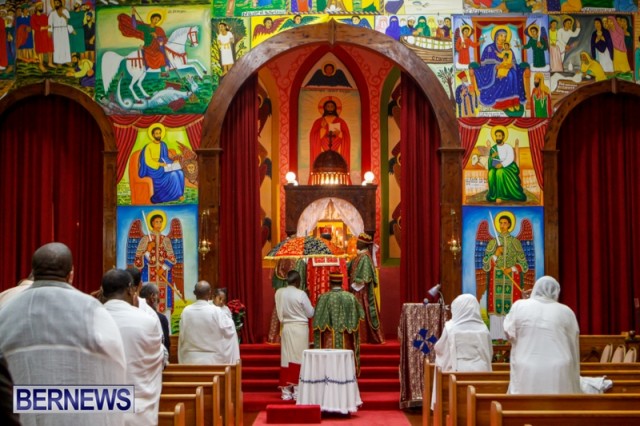Ethiopian Orthodox Church
The Ethiopian Orthodox Church is the largest church in ETHIOPIA, with some 29 million members. The neighboring country of ERITREA has another 1.8 million members. This Christian church—also known by the name tewahido, meaning “unity”—separated from the Roman Catholic Church in A.D. 451 after the Council of Chalcedon. The council had declared that Jesus Christ had both a divine and a human nature. However, the people who formed the Ethiopian church believed that Jesus Christ had a single nature that was a union of his divine and human natures.
Christianity may have existed in Ethiopia before A.D. 100 among Middle Eastern merchants. The religion spread in the 300s through the efforts of St. Frumentius of Tyre and his brother Aedisius. According to one historian, the two men were shipwrecked in Ethiopia and adopted by the king of AKSUM, the empire that occupied much of what is now Ethiopia. As they rose to positions of power, the brothers converted the court and many of the people to Christianity.

In the 400s monks began arriving from the Byzantine Empire, and they established a strong tradition that continues today. Ethiopian Christians have great respect for monks and nuns, and many take monastic vows toward the end of their lives.
During the 600s and 700s, the Ethiopian church was cut off from the rest of the Christian world by Muslim conquests in north-east Africa. The church remained a major force in Ethiopia for well over a thousand years, though the country's Christian rulers and patriarchs had to fight off several challenges from Muslims. The dominant position of tewahido ended in 1974, when rebel forces overthrew Emperor HAILE SELASSIE. The new government took the church's land, replaced its patriarch, and made it an equal among other religions.
Ethiopian Orthodox services and texts are mainly in the church's ancient language, Ge'ez, although many texts have been translated into Amharic, the modern language of Ethiopia. Priests and deacons perform religious services. Both Saturday and Sunday are holy days, and over half the days in the year are fasting days when the faithful do not eat breakfast and live on vegetables and plant products. Each church is built around a replica of the Ark of the Covenant, reflecting tewahido's belief that it is the true heir of Judaism.
The Ethiopian Orthodox Church faces several challenges, including how to modernize its practices and how to be independent of the government. A major crisis occurred in 1993, when the government's hoice of patriarch was rejected by most Ethiopian Christians outside of the country. They then began organizing an independent tewahido church. (See also Copts, Galawdewos, Islam, Religion and Ritual.)